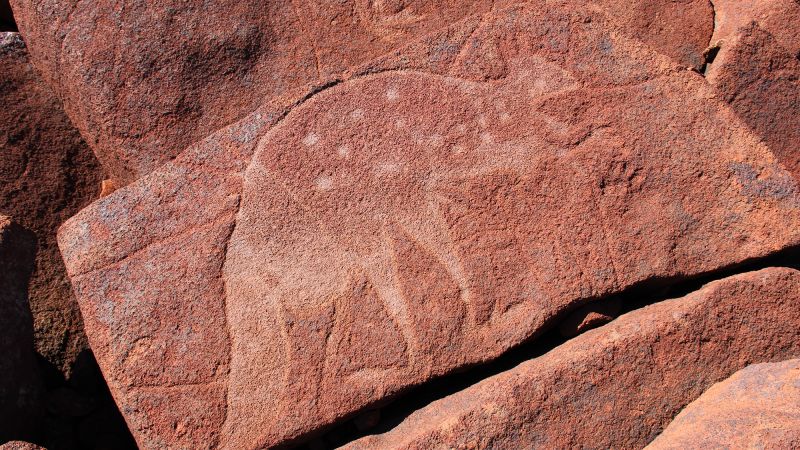Gas Plant Expansion Risks Destroying Priceless Aboriginal Rock Art in Western Australia

Western Australia Faces Cultural Heritage Crisis: Gas Plant Expansion Threatens Ancient Rock Art
A controversial decision by the Australian government to potentially approve a gas plant extension in Western Australia has ignited a fierce debate over the preservation of irreplaceable Aboriginal rock art. Located on a remote peninsula, this site holds millions of images etched onto rocks, a testament to the artistic and cultural heritage of Australia’s original inhabitants dating back tens of thousands of years. Among these remarkable depictions are what are believed to be the earliest known depictions of the human face, offering a unique glimpse into the lives and beliefs of early Australians.
A Window into the Deep Past
The rock art site is not merely a collection of drawings; it’s a living archive of Indigenous history and knowledge. The images, created over millennia, chronicle changes in the environment, animal populations, and the spiritual beliefs of the region's traditional owners. The discovery of early human face depictions is particularly significant, providing invaluable insights into the cognitive abilities and artistic expression of our ancestors. Experts believe the site represents one of the most important concentrations of rock art in the world, rivaling sites in Europe and Africa.
The Threat of Gas Plant Expansion
The proposed extension of the gas plant poses a direct and significant threat to this fragile cultural heritage. Construction activities, including blasting, excavation, and increased traffic, risk damaging the rock art through physical impact, vibration, and pollution. The potential for groundwater contamination is also a major concern, as it could erode the rock surfaces and degrade the pigments used in the artwork. Furthermore, habitat disruption and noise pollution could impact the spiritual significance of the site for Indigenous communities.
Indigenous Concerns and Calls for Protection
Traditional owners have voiced strong opposition to the gas plant extension, emphasizing the profound cultural and spiritual significance of the rock art. They argue that the government has not adequately consulted with them and that the proposed mitigation measures are insufficient to protect the site. Indigenous groups are demanding a moratorium on the project until a comprehensive cultural heritage assessment is conducted and a plan for long-term protection is established. They are calling for alternative development options that prioritize the preservation of this unique cultural treasure.
A National and International Responsibility
The fate of this ancient rock art site is not just a local issue; it’s a matter of national and international importance. The site represents a crucial link to Australia’s deep past and offers invaluable insights into human history. Protecting it is a responsibility we all share. The government's decision will set a precedent for how cultural heritage is valued and protected in the face of economic development. A failure to prioritize preservation would be a devastating loss for Australia and the world.
What Can Be Done?
- Support Indigenous-led conservation efforts: Donate to organizations working to protect Aboriginal cultural heritage.
- Contact your elected officials: Urge them to prioritize the protection of the rock art site and oppose the gas plant extension.
- Raise awareness: Share this story with your friends and family to help educate others about the importance of preserving this cultural treasure.
The future of this extraordinary rock art site hangs in the balance. It's time to act to ensure that these ancient stories continue to be told for generations to come.






